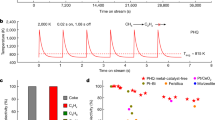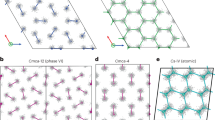Abstract
IT has been shown in a recent paper1 by one of us (H.S.G.) that, in the absence of convection, the loss of energy (Q) from an electrically heated wire, compensated for end effects and suitably disposed in a gas, is given by From the above equation, it is evident that measurements of Q and the corresponding pressure (p) over an appropriate range of pressure enable the values of the thermal conductivity (K) of the gas, and also A, to be calculated. Furthermore, it may be shown that if the observations are continued into the low-pressure region where the gas is rarefied, then the heat transfer is governed by the relation If the temperatures T1 and T2 are maintained constant throughout the whole range of pressure, then assuming independence of the accommodation coefficient a upon pressure, its value can be deduced directly from equations (1a) and (2), and hence.R, the molecular heat of the gas, can also be determined by substitution in (1a). We have carried out measurements in the case of hydrogen, and the value of at 283° abs. was found to be 2.448 and that of the accommodation coefficient 0.31.
This is a preview of subscription content, access via your institution
Access options
Subscribe to this journal
Receive 51 print issues and online access
$199.00 per year
only $3.90 per issue
Buy this article
- Purchase on SpringerLink
- Instant access to full article PDF
Prices may be subject to local taxes which are calculated during checkout
Similar content being viewed by others
References
Phil. Mag., 22 (Aug., 1936).
Proc. Roy. Soc., A, 146 (Oct., 1934).
Author information
Authors and Affiliations
Rights and permissions
About this article
Cite this article
GREGORY, H., STEPHENS, R. Temperature Drop Effect in Relation to the Determination of the Molecular Heats of Gases. Nature 139, 28 (1937). https://doi.org/10.1038/139028a0
Issue date:
DOI: https://doi.org/10.1038/139028a0
This article is cited by
-
A New Method for Measuring the Atomic Heats of Gases
Nature (1951)



